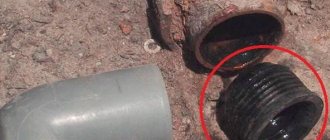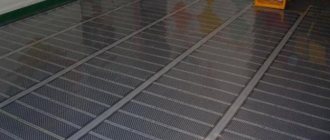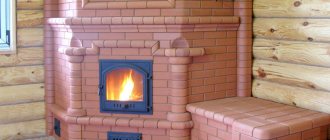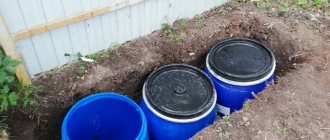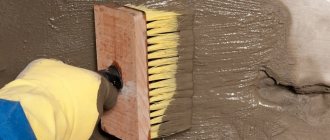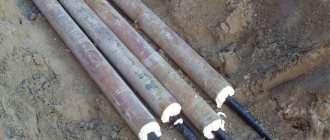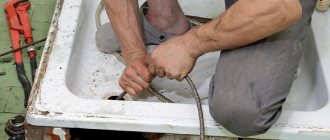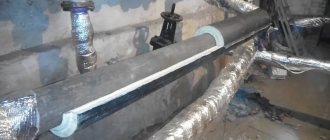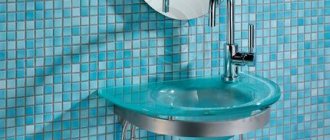Why are wires laid in pipes?
According to PUE 2.2.20 (Rules for the construction of electrical installations), conductors subject to mechanical stress must be additionally protected. In addition, the gasket in the pipe provides the following protection:
- from stretching, squeezing, breaking, puncture;
- protects a flammable base or a fire-hazardous room from fire during a short circuit (short circuit);
- prevents sunlight and precipitation from destroying the insulation.
This method is used mainly in industrial premises and when laying in soil.
How to hide a heating system in an apartment - let's look at the methods
Heating pipes can be hidden in panel walls in several ways. And for this room there are not so many of them. The first option in panel houses is the use of grooves, and the second way is the construction of false walls. Each of the options has pros and cons, and you need to make a decision for yourself after studying these methods in detail.
A heating pipe can be hidden in the wall of a panel house when a new circuit is being assembled, or repair work is being carried out in an already functioning structure. As a rule, the wall of a panel house and the heating main are placed in different planes.
And when it is necessary to bring them into one plane, recesses are cut in the panel walls and the heating line is placed there. When doing this, you need to pay attention to the following points:
- Before starting work in a panel house, the riser is blocked. There is no need to rush when performing these actions. And you should definitely make sure that the work is planned on the right riser.
- If the depth of the canal exceeds half the septal thickness, then the best option would be to abandon the planned actions. So, for example, a bathroom in a panel house is a separate concrete block system. And the thickness of such panel walls will not be enough for this task.
- The dimensions of the grooves in panel walls should not run end to end, and they should not infringe on the contour. The recesses must be made taking into account the system fasteners, its volume and the insulating layer.
- Before covering the system in the wall of a panel house, it should be covered with insulation, otherwise condensation will form on the surface of the pipe.
- Before fastening the structure to the wall of a panel house, you need to determine its main locations. These include joints and zones of change in direction of the coolant.
To facilitate the work of chiselling a wall in a panel house, it is recommended to use a grinder. First, markings should be made, and then along the corresponding lines, indentations are made to a certain level of depth.
ADVICE! When working with an angle grinder, not only a lot of noise arises, but also dust. Modern tools have a big advantage - the function of connecting to a construction vacuum cleaner, and this prevents the appearance of dust.
According to existing rules, the communication network in the wall of a panel house must be located in an area of unobstructed access. Only those areas where the possibility of an accident is zero are left directly closed.
The advantage of this option
Given that there are different installation methods, what are the advantages of this method? Since the pipe is round in shape, it is ideal for laying wire or cable in it. As the conductor is pushed through, it bends less frequently, requiring less effort. Such structures have a smooth turn, unlike the box, which also facilitates installation and protects the wire from breaking.
The round section can withstand more load than any other. Cables laid underground in this way will be more protected from compressive loads and surface deformation, for example, during building subsidence.
Project preparation
When creating a project for hidden wiring, attention is paid to the fire safety of a wooden house. This is true even to the detriment of appearance deterioration.
The hidden wiring diagram should have a minimum of turns. In this case, contact with wood must be avoided. The cable must be laid in copper and steel pipes. In a PVC corrugation or metal hose, installation under asbestos or plaster is allowed, but according to PEU 7 this is prohibited.
Before starting work, it is necessary to develop a project and coordinate it with the local power supply company (District Electric Networks).
PTS service employees develop technical conditions that apply when performing work. First, the total power of electrical appliances is calculated, and then a wiring diagram is developed.
Algorithm of actions when creating a project:
- Development of a technical plan for a wooden house. The diagram indicates the locations of electrical sockets, lamps, switches and electrical appliances with a separate supply.
- The type of cable is selected for each electrical point. If switches with two buttons and “triple” sockets (with a ground tap) are used, a cable with three cores is connected to them.
- The hidden wiring diagram for a wooden house shows the locations for installing junction boxes. To reduce their number, one distribution box is used for two rooms.
- The power consumption of each receiver is indicated. If the device is equipped with an electric motor, the parameter is indicated taking into account the starting current of the motor.
- Light bulbs, sconces and other lighting equipment are brought into one group, and consumers of higher power into the second. For reliability, both branches are connected to their own circuit breaker with an individual rated current.
- The distance from the installation site of hidden wiring to window and door frames, as well as electrical points to the ceiling or floor is indicated. This information is useful and helps protect the wiring from damage during repairs. Electrical cable turns are carried out only at right angles.
After preparing the circuit, the power consumed by electrical appliances is calculated if they are switched on simultaneously.
The rated load current of the input circuit breaker (the one located at the entrance to the room) is also calculated here.
What cables are allowed to be used?
There are no special requirements for wires and cables. According to 2.3.42. PUE, it is permissible to lay cable lines in rubber and plastic insulation without additional protection, since pipes perform this function. The number of shells is also not regulated. The conductors can be copper or aluminum. Each conductor may consist of one or more cores.
When servicing a four-wire network, the cable to be laid must be four-wire (clause 2. 3. 52). This applies to HDPE (low-density polyethylene) pipes; if steel is used and the voltage is up to 1 kV, then according to 1.7.121. the pipe can play the role of a neutral conductor. This is provided that there is no electrical break along the entire route.
It is prohibited to place next to (clause 2. 1. 16.):
- working and backup network;
- working and emergency line;
- circuits up to and above 42 V.
Two-pipe system
This wiring option is also called parallel. It involves two pipes, one of which is supply, the other is return.
Advantages of a two-pipe system:
- Low temperature loss at remote nodes.
- It is possible to install additional radiators in the system if necessary.
- Possibility of setting the temperature on individual batteries.
- There are no restrictions on the number of floors.
- There is no need to use a powerful pump, as in the case of a single-pipe system.
- If one battery does not function, this does not in any way affect the performance of the entire system.
- To carry out repair work, it is not necessary to turn off the entire system and empty it.
Characteristics of pipes for laying cables in soil
To create cable blocks (2. 3. 102.), it is allowed to use pipes:
- metal (cast iron, steel);
- asbestos-cement;
- concrete;
- ceramic;
- others.
Others also include plastic ones. The choice of material depends on the groundwater level, the presence of an aggressive environment and stray currents. When laying oil-filled single-phase cables, the pipes must be made of non-magnetic material, and one cable must be laid in each of them.
The pipes themselves can be either rigid or flexible. Corrugated polyethylene or metal hoses are used as flexible ones. The DCS (dielectric cable system) catalog provides a large selection of products.
Corrugated pipes
Due to their lightness and flexibility, these types are widely used for laying in the ground. Available in two versions:
- reinforced;
- unreinforced.
The first types are more durable thanks to the steel wire installed during manufacture. A double-wall pipe is especially convenient for installation. The outer layer is made in the form of corrugated HDPE, which has high strength. Internal - made of LDPE (high-density polyethylene) and forms a smooth surface, this makes pulling the cable more convenient.
HDPE easily tolerates ultraviolet radiation and does not corrode, all this makes them suitable for laying external (street) wiring. Some types are equipped with a probe - a cord stretched across the entire length of the pipe. This significantly speeds up the installation process.
Metal pipes
Metal is much stronger than plastic, so such pipes are laid where mechanical strength is especially important. Steel pipes are laid at the intersection:
- tram and railway lines;
- highways;
- entrances to a garage or fence;
- gas and oil pipelines;
- heating mains.
Metal is also used if the route runs along railway or tram tracks, as well as indoors, including in wooden houses. Metal pipes are used for open and hidden installations. In electrical rooms, instead of pipes, it is permissible to use an angle and a channel. They are also widely used for outdoor installation (open, hidden, under a canopy).
Plastic pipes
This type is increasingly used when laying cables or wires. This is due to the characteristics:
- unlike metal pipes, plastic pipes are not subject to corrosion, due to which the service life increases to 50 years;
- being a dielectric, it additionally protects the cable;
- do not require grounding;
- resistant to chemicals and solvents;
- HDPE can be operated at temperatures down to -45 degrees.
Particular attention should be paid to the relatively new material made of cross-linked polyethylene foam (polyethylene). Unlike polyethylene, cross-linked polymer has a number of advantages:
- softening of the material occurs at a temperature of +150 degrees, and melts at +200 degrees;
- has greater rigidity and tensile strength;
- has a high vapor barrier;
- capable of restoring its shape during short-term deformation.
Cross-linked polyethylene is used to insulate high-voltage cables and pipes, and the presence of fittings allows you to lay routes of any configuration.
Single pipe heating system
This option for routing heating pipes is also called sequential.
Peculiarities:
- You can make a self-flowing circuit;
- A fairly economical option, its implementation requires a minimum of materials;
- Compatible with open systems;
- Depending on the distance of the sources, the temperature of the radiators changes, the closest one will be the warmest, the furthest one will be the coldest;
- It is necessary to install bypasses, otherwise if any battery is clogged, the system stops working;
- For forced fluid flow, a powerful pump is required;
- Strict restrictions on the number of radiators in the riser.
But the use of modern solutions makes it possible to partially or completely eliminate all the disadvantages of this type of wiring. Single-pipe systems can be vertical or horizontal. In the first option, the coolant flows upward through a pipe located under the ceiling or in the attic. Then from there the pipes go down to the radiators. The use of a vertical system allows for natural fluid flow, so its operation does not require connecting a pump.
Technology of laying cables in metal pipes: installation process
Installing cables in pipes is quite labor-intensive and expensive, so it is used when it is necessary to guarantee the cable protection from mechanical stress. Bookmarking is carried out in several stages:
- marking the upcoming route;
- preparation and installation of pipes;
- cabling.
To complete the first point, the installation location is determined and preparatory work is carried out. When installing on the walls of buildings, foundations, partitions, grooves, holes for electrical appliances, transitions, etc. are made. Lengths and bends are measured, the necessary documentation is drawn up and sent to the electrical installation workshop. There the pipes are cleaned, painted, and cut to size. The joints must be processed so that there are no burrs. If necessary, make bends. Finished products are labeled, packaged and sent to the customer.
The installation is carried out in such a way as to prevent the ingress of dust, oil and other substances. To prevent water from accumulating, the laying is made at an angle of at least 2 degrees towards the boxes. Fastening by welding is prohibited; for this you need to use staples, clamps, pads, and clamps. The distance between the fasteners should not be greater than that indicated in the table.
| Outer diameter of pipes, mm | Distance between fastenings, m |
| 18-26 | 2,5 |
| 30-42 | 3,0 |
| 45-90 | 4,0 |
All connections and inputs must be sealed. Then the electrical equipment is installed.
At the final stage, tightening is performed. Check the cleanliness of the pipes, if necessary, they are blown with compressed air, and plastic bushings are put on the ends. Wires and cables are assembled in groups, the cores are tied to steel wire with a diameter of 2-5 mm and pulled through.
Construction of the trench
First, the terrain is marked; the future route must be removed from the foundation, gas pipeline, etc. at the distance specified in the PUE. Then the ground is cleared of plants and debris. Earth-moving equipment is used to dig trenches; where this is not possible, they are dug by hand. The depth is determined by the operating voltage. The bottom is cleaned of debris if necessary, leveled and lined with a sand cushion. Signal tape must be laid on top of the route.
Trenchless method of laying cables in the ground
This is a complex and expensive method, carried out with specialized equipment. It is produced in places where it is impossible to dig a trench due to any circumstances, for example, laying under a reservoir. The bottom line is that horizontal drilling is carried out using an adjustable drill head. Then the channel expands, a HDPE pipe is pulled in which there is a steel cable, and a cable is laid through it using a cable.
Laying cables under the road
In the case where the route must pass through an asphalt road, in order not to disturb its surface, another method of passage is used - a puncture. The rod with the tip is pushed through the soil under the road using machinery. The tip, passing through the thickness, compacts the earth around itself, preventing it from crumbling. This passage is called the starting passage. After the rod has reached the surface, an expander is attached to it and pulled in the opposite direction. The passage widens, and the earth around is compacted even more. A cable line is pulled through it.
SNIP requirements
*
The general SNIP regulating ventilation and heating is registered under number 41−01−2003. There are other norms, among which are:
- SNiP 2.04.05-91 (clause 3.58). Regulates the installation of decorative screens and grilles on heating radiators.
- SNiP 41-01-2003 (clause 6.5.13.). Indicates the need to install shut-off valves, except in rooms with a high probability of coolant freezing.
- SNiP 3.05.01-8 (clause 3.18). Regulates the slope of the heating circuit with a pipe length of more than 500 mm.
- SP 40-108-2004 (clause 3.2.1). Regulates the connection of a copper pipe to a boiler with aluminum terminals.
Electrical wiring test
After installing hidden wiring, it must be tested. This is especially important for wooden houses with a low level of fire resistance.
When checking, special instruments are used, and trained employees of electrical laboratories are invited to perform the work.
The range of events includes:
- visual inspection;
- grounding resistance measurement;
- AB check;
- phase-zero circuit test;
- checking protective devices;
- control of the chain between the ground electrode and the devices.
After completion of the work, a test report is drawn up and submitted. Carrying out such measures is mandatory, because they help to avoid accidents and prevent equipment breakdowns.

